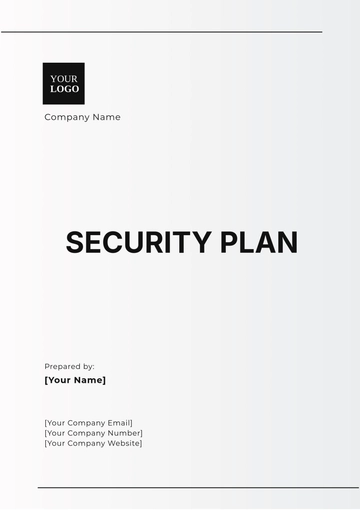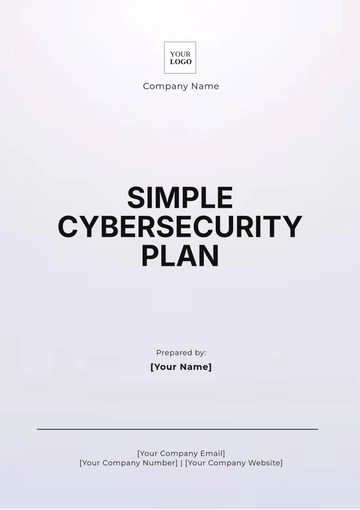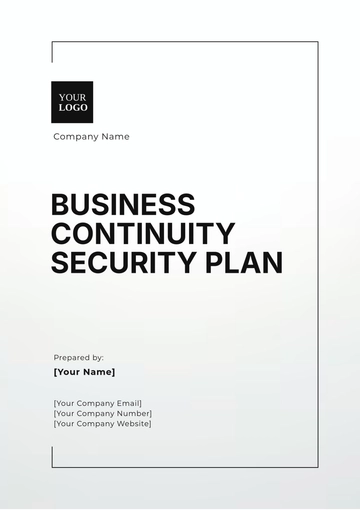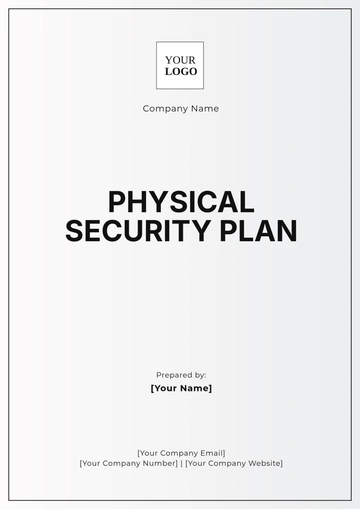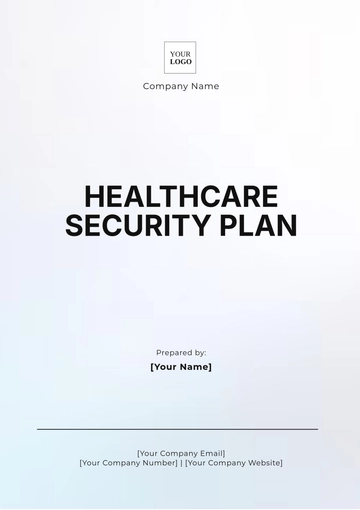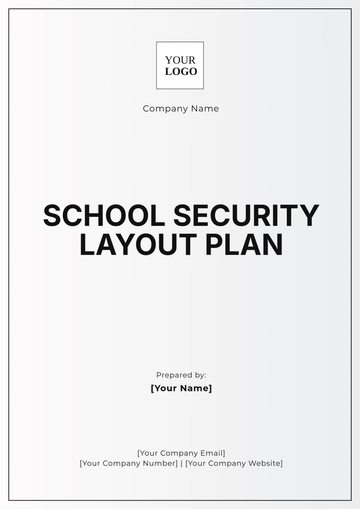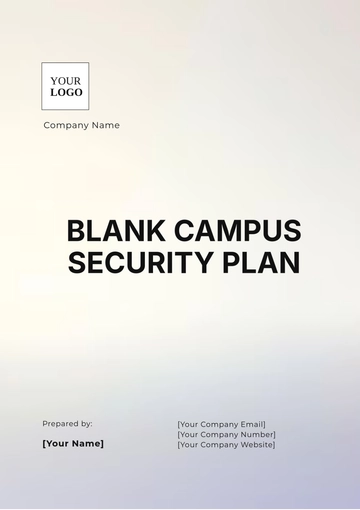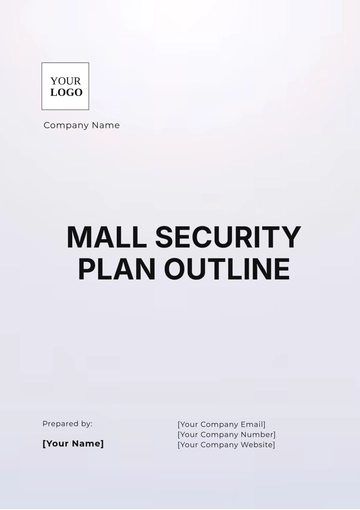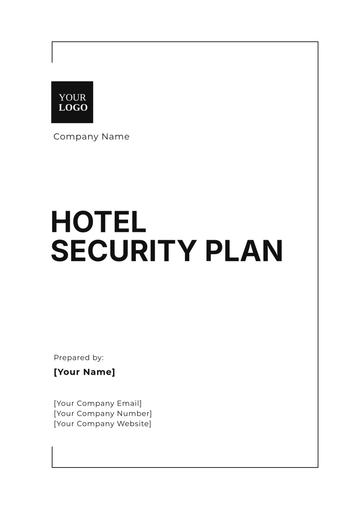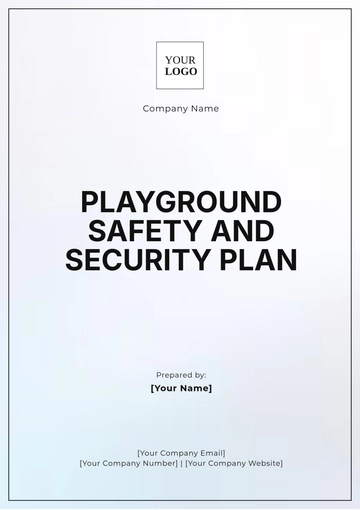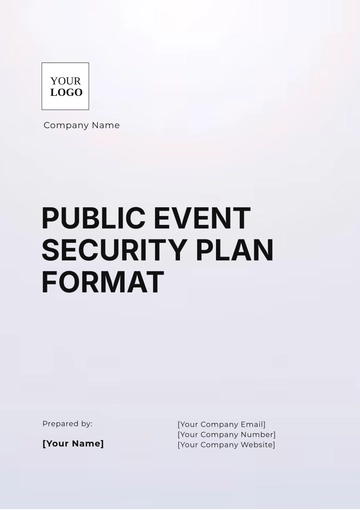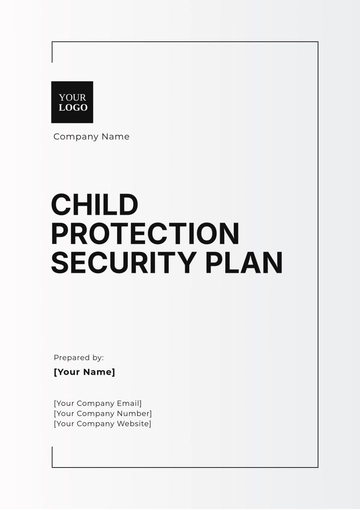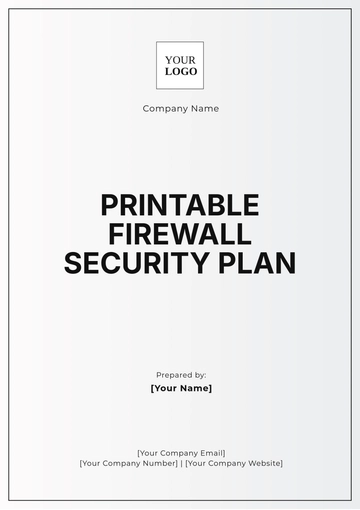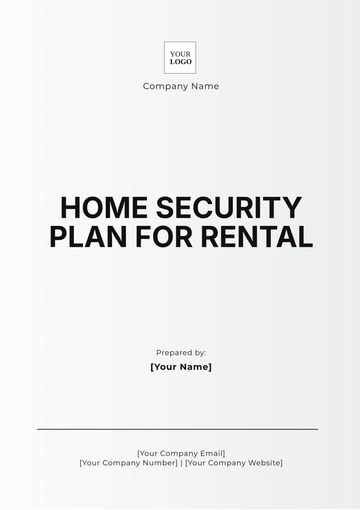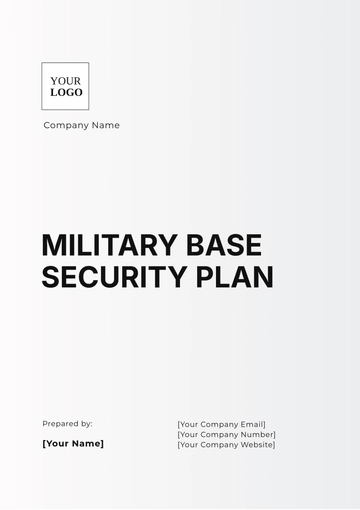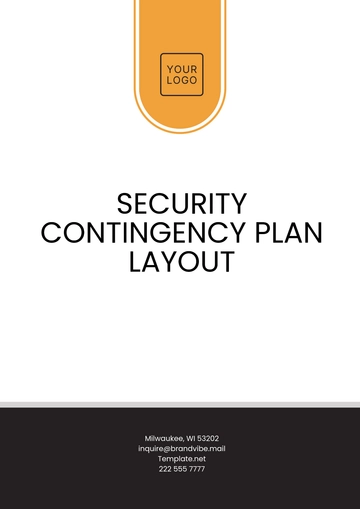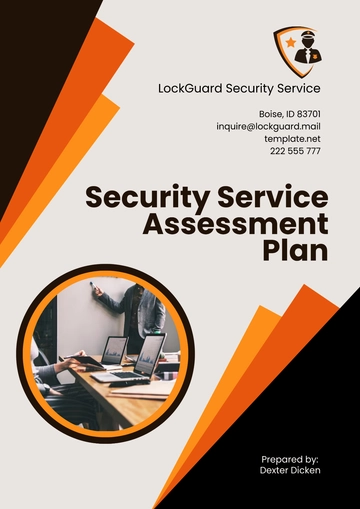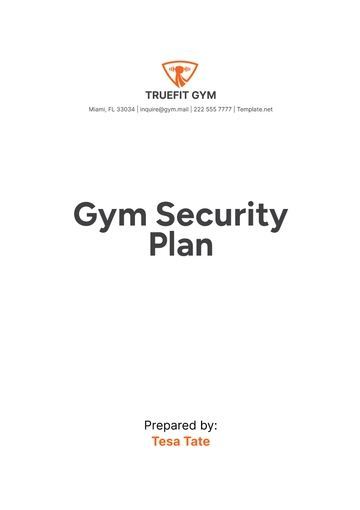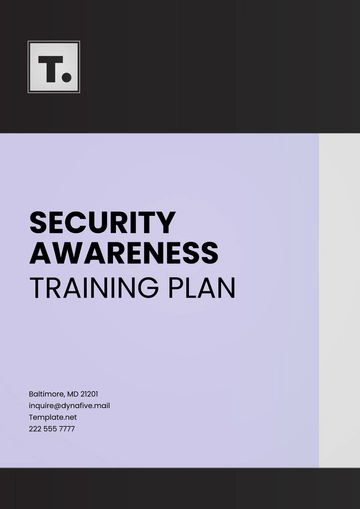Free Mall Security Plan Outline

I. Introduction
Mall security is paramount in fostering a safe and welcoming environment for shoppers, employees, and property. This comprehensive security plan outlines the strategies, protocols, and technologies that will be employed to maintain safety, minimize risks, and respond effectively to incidents within the shopping mall.
II. Security Personnel
A. Roles and Responsibilities
Patrol the Mall Premises: Security personnel will conduct regular foot and vehicle patrols of the mall premises, including parking lots, to deter potential criminal activity and reassure patrons.
Monitor Surveillance Systems: Officers will monitor live feeds from CCTV cameras, ensuring that all areas of the mall are under constant surveillance and any suspicious activities are immediately identified.
Respond to Emergencies: Trained security personnel will respond swiftly to emergencies, such as theft, disturbances, or medical incidents, coordinating with local law enforcement and emergency services as necessary.
Assist Customers and Staff: Security will serve as a point of contact for shoppers and employees, providing assistance and guidance while promoting a friendly and approachable presence.
B. Training and Development
Regular Training Sessions: Security personnel will undergo ongoing training that covers a range of topics, including conflict resolution, crowd management, and the use of surveillance equipment.
Emergency Response Drills: Frequent drills will be conducted to prepare security staff for various emergency scenarios, including active shooter situations, natural disasters, and medical emergencies.
Customer Service Workshops: Training will emphasize the importance of customer service, teaching security personnel how to effectively communicate and interact with mall patrons.
III. Surveillance Systems
A. CCTV Installation
Position Cameras at Strategic Points: High-definition cameras will be strategically installed at entry and exit points, parking areas, common areas, and retail spaces to ensure comprehensive coverage.
Regular maintenance checks: Scheduled maintenance checks will ensure that all surveillance equipment is functioning optimally and that any technical issues are addressed promptly.
B. Monitoring and Alerts
24/7 Monitoring of CCTV Footage: A dedicated security team will monitor CCTV footage around the clock, utilizing advanced analytics to detect unusual behavior or patterns.
Automated Alert Systems: The surveillance system will be equipped with automated alerts for suspicious activities, enabling immediate response by security personnel.
IV. Access Control
Entry and Exit Points
Secure All Entry and Exit Points: All access points will be staffed with trained security personnel and equipped with electronic access control systems, such as card readers or biometric scanners, to prevent unauthorized entry.
B. Staff and Visitor Identification
Badge System for Staff: All employees will wear identification badges that display their name and position, allowing for easy identification by security personnel.
Visitor Sign-In Procedures: Visitors will be required to sign in at designated entry points, providing their contact information and purpose of visit to ensure accountability.
V. Emergency Procedures
A. Fire Safety
Fire Alarms and Evacuation Routes: The mall will be equipped with state-of-the-art fire alarms, and clear evacuation routes will be posted throughout the facility to guide patrons during emergencies.
Regular fire drills: Periodic fire drills will be conducted to ensure that both staff and shoppers are familiar with evacuation procedures and emergency exits.
B. Medical Emergencies
First Aid Stations: Designated first aid stations will be established throughout the mall, stocked with necessary medical supplies and staffed by trained personnel.
Training in CPR and First Aid: Security personnel will receive certification in CPR and first aid to provide immediate assistance in medical emergencies.
VI. Security Policies and Procedures
A. Code of Conduct
Clear Guidelines on Acceptable and Prohibited Behaviors: A comprehensive code of conduct will be developed and prominently displayed, outlining behaviors that are deemed acceptable and those that will not be tolerated within the mall.
B. Incident Reporting
Standardized Forms for Documentation: All incidents will be documented using standardized reporting forms to ensure consistency and thoroughness.
Protocols for Escalating Incidents: Clear protocols will be established for escalating serious incidents to management and law enforcement, ensuring a swift response.
VII. Technology Integration
A. Security Software
Integration of Advanced Security Software: The security team will utilize advanced software solutions for real-time threat analysis, incident reporting, and data management to enhance operational efficiency.
B. Communication Tools
Two-Way Radios for Personnel: Security personnel will be equipped with two-way radios for instant communication, ensuring rapid coordination during incidents.
Emergency Intercom Systems: The mall will have intercom systems installed for immediate communication with patrons during emergencies, providing real-time instructions and updates.
VIII. Evaluation and Improvement
A. Regular Audits
Conduct Security Audits Quarterly: Comprehensive security audits will be performed every quarter to assess the effectiveness of security measures and identify vulnerabilities.
B. Feedback and Adaptation
Collect feedback from stakeholders: Regular feedback will be gathered from shoppers, staff, and security personnel to identify areas for improvement.
Update the security plan as needed: The security plan will be reviewed and revised based on audit findings and stakeholder feedback, ensuring continuous improvement in safety and security measures.
- 100% Customizable, free editor
- Access 1 Million+ Templates, photo’s & graphics
- Download or share as a template
- Click and replace photos, graphics, text, backgrounds
- Resize, crop, AI write & more
- Access advanced editor
Ensure your mall's safety with the Mall Security Plan Outline Template. This customizable and downloadable template simplifies the creation of a comprehensive security plan tailored to your needs. It provides a clear framework for security protocols and procedures, making it easy to address potential risks. Plus, it's printable and editable in our AI Editor Tool, ensuring you have everything you need to keep your premises secure.
You may also like
- Finance Plan
- Construction Plan
- Sales Plan
- Development Plan
- Career Plan
- Budget Plan
- HR Plan
- Education Plan
- Transition Plan
- Work Plan
- Training Plan
- Communication Plan
- Operation Plan
- Health And Safety Plan
- Strategy Plan
- Professional Development Plan
- Advertising Plan
- Risk Management Plan
- Restaurant Plan
- School Plan
- Nursing Home Patient Care Plan
- Nursing Care Plan
- Plan Event
- Startup Plan
- Social Media Plan
- Staffing Plan
- Annual Plan
- Content Plan
- Payment Plan
- Implementation Plan
- Hotel Plan
- Workout Plan
- Accounting Plan
- Campaign Plan
- Essay Plan
- 30 60 90 Day Plan
- Research Plan
- Recruitment Plan
- 90 Day Plan
- Quarterly Plan
- Emergency Plan
- 5 Year Plan
- Gym Plan
- Personal Plan
- IT and Software Plan
- Treatment Plan
- Real Estate Plan
- Law Firm Plan
- Healthcare Plan
- Improvement Plan
- Media Plan
- 5 Year Business Plan
- Learning Plan
- Marketing Campaign Plan
- Travel Agency Plan
- Cleaning Services Plan
- Interior Design Plan
- Performance Plan
- PR Plan
- Birth Plan
- Life Plan
- SEO Plan
- Disaster Recovery Plan
- Continuity Plan
- Launch Plan
- Legal Plan
- Behavior Plan
- Performance Improvement Plan
- Salon Plan
- Security Plan
- Security Management Plan
- Employee Development Plan
- Quality Plan
- Service Improvement Plan
- Growth Plan
- Incident Response Plan
- Basketball Plan
- Emergency Action Plan
- Product Launch Plan
- Spa Plan
- Employee Training Plan
- Data Analysis Plan
- Employee Action Plan
- Territory Plan
- Audit Plan
- Classroom Plan
- Activity Plan
- Parenting Plan
- Care Plan
- Project Execution Plan
- Exercise Plan
- Internship Plan
- Software Development Plan
- Continuous Improvement Plan
- Leave Plan
- 90 Day Sales Plan
- Advertising Agency Plan
- Employee Transition Plan
- Smart Action Plan
- Workplace Safety Plan
- Behavior Change Plan
- Contingency Plan
- Continuity of Operations Plan
- Health Plan
- Quality Control Plan
- Self Plan
- Sports Development Plan
- Change Management Plan
- Ecommerce Plan
- Personal Financial Plan
- Process Improvement Plan
- 30-60-90 Day Sales Plan
- Crisis Management Plan
- Engagement Plan
- Execution Plan
- Pandemic Plan
- Quality Assurance Plan
- Service Continuity Plan
- Agile Project Plan
- Fundraising Plan
- Job Transition Plan
- Asset Maintenance Plan
- Maintenance Plan
- Software Test Plan
- Staff Training and Development Plan
- 3 Year Plan
- Brand Activation Plan
- Release Plan
- Resource Plan
- Risk Mitigation Plan
- Teacher Plan
- 30 60 90 Day Plan for New Manager
- Food Safety Plan
- Food Truck Plan
- Hiring Plan
- Quality Management Plan
- Wellness Plan
- Behavior Intervention Plan
- Bonus Plan
- Investment Plan
- Maternity Leave Plan
- Pandemic Response Plan
- Succession Planning
- Coaching Plan
- Configuration Management Plan
- Remote Work Plan
- Self Care Plan
- Teaching Plan
- 100-Day Plan
- HACCP Plan
- Student Plan
- Sustainability Plan
- 30 60 90 Day Plan for Interview
- Access Plan
- Site Specific Safety Plan
